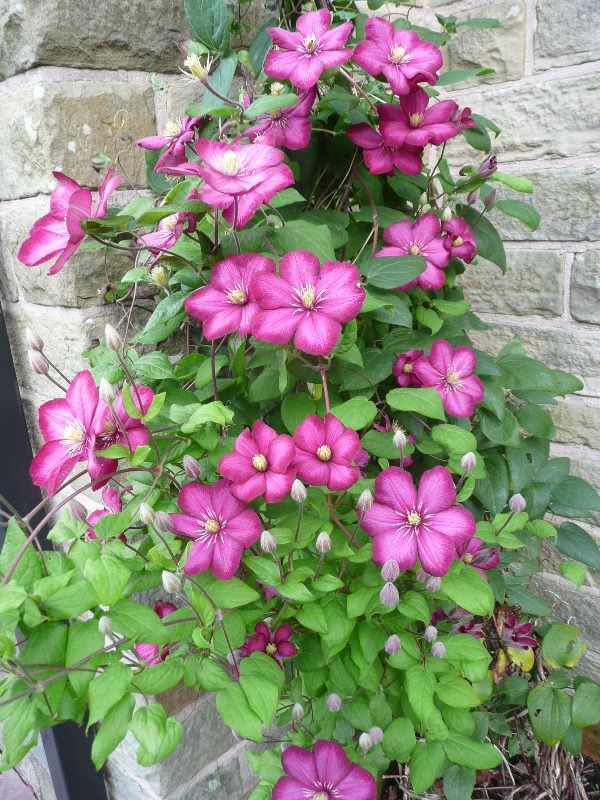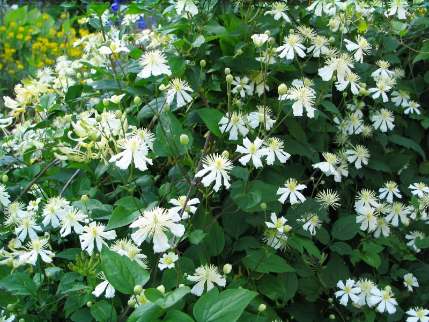Planting Clematis
Posted on
 |
I spent part of yesterday transplanting a Clematis, the one in the image Clematis Jackmanii rubra a midsummer group 2 Clematis which produces masses of flowers. I love Clematis and apart from pruning they are not hard work. Even working out when and how to prune Clematis is not so difficult or time consuming once you work out what type of Clematis it is. The reason I was transplanting it was my fault, I had planted it in a really good spot but in haste used a wicker obelisk for support because that's all I had to hand. As a result of the torrential wet winter it had rotted, and the Clematis was left clinging to a few miserly supports. Wicker obelisks and supports look really good but they are not so good for permanent planting. Wicker type supports and obelisks are good for growing up annuals such as sweet peas, and are also best stored in doors somewhere dry over the winter. I purchased a tall metal obelisk which is nice enough, not necessarily a thing of beauty, but the really attractive obelisks were running out, some, at £1000+ and I am the sunday gardener not the rich gardener and so the under £30.00 varitey will be tested out instead. Using oboliks in the garden to grow climbers is a really good way to get hight and colour into parts of the garden where there are no existing structures. The image below is an established Clematis with a honeysuckle in a border and it has completely covered the obelisk, the flowers cascade into the border looking really attractive for a along flowering season June September. Clematis fargesioides and lonicera make a great cream, pale yellow and white combination for border planting. The video below shows how to plant a Clematis and the importance of planting the Clematis slightly below the soil surface. The advantage of planting a Clemtis mixed into a border along side other plants is the chances are, naturally or by virtue of how you plant around the obelisk, you can have another plant shade the roots of the Clematis which are the ideal growing conditions for Clematis, (and honeysuckle) roots in shade and heads in sun.
|
 |
|

Add a comment: